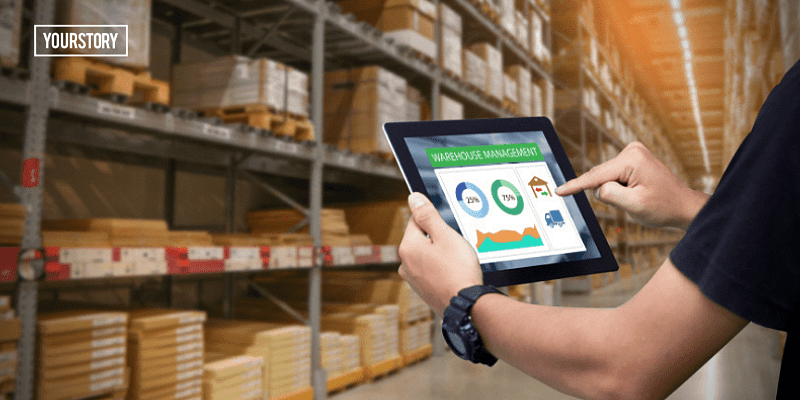At the outset of the COVID-19 pandemic that has shaken the world to its core and left long-lasting implications on businesses and daily lives, logistics and supply chains were at the forefront of disruption.
While highlighting the significance of efficient logistics, the global crisis also underscored the urgent need for a shift towards digitisation and automation, particularly in warehouse management, a space that has continuously evolved over the past few years. While experts had predicted certain trends in the pre-pandemic time in early 2020, they didn’t anticipate the speed at which these trends would manifest.
Consumer behavior has been one of the major drivers of change in the way logistics operations and warehouse management is done today.
An increased preference for online shopping, digital payments, and doorstep deliveries has contributed to skyrocketing ecommerce growth and further driven transformations in Warehouse Management Systems.
With logistics players ramping up their infrastructure to meet soaring demand and adapt to the changing consumer preferences, here’s how COVID-19 has impacted Warehouse Management System for smarter and more efficient logistics.
What is a Warehouse Management System?
In a nutshell, a Warehouse Management System is a set of management processes that control warehouse operations – right from inventory management and control to packaging and delivering the shipment to the right destination.
For logistics platforms, having a robust Warehouse Management System in place can solve pitfalls and offer numerous benefits including inventory control and transparency, effective synchronisation between order placement and delivery, optimisation of storage space, inventory management, and creating effective inbound and outbound processes.
One of the elements that have enhanced Warehouse Management Systems amidst the pandemic is automation.
Automation: The driving force
The past year has seen automation become the cornerstone for smooth and efficient logistics. Optimising workflows and enhancing productivity would require top-notch Warehouse Management Systems. Inventory management has become crucial, especially with the demand for essential items rapidly increasing.
Today, logistics platforms are integrating cutting-edge technologies with their Warehouse Management Systems to ensure greater efficiency. Voice-enabled order picking, real-time displays, RFID (Radio Frequency Identification) tags, etc., are some of the key features used.
COVID-19 has undeniably accelerated warehouse automation to overcome the unprecedented challenges the pandemic has thrown our way. With automation, a Warehouse Management System can help establish the best floor plans, picking rules, and assist in maintaining synchronisation between incoming orders and stored inventory.
Efficient inventory management
Speaking of synchronisation between incoming orders and stored goods, a robust Warehouse Management System allows logistics companies to ensure that there are no mishaps in the storage and delivery of shipments.
Logistics platforms integrate Warehouse Management Systems with bar codes, to minimise tampering of goods, and provide the optimum product, location, and batch-wise response, thereby generating higher inventory visibility with real-time data.
A solid Warehouse Management System merged with cutting-edge technology lays the foundation for organised inventory management with little to no errors, thus paving the way for smart, efficient, seamless logistics functioning.
Final word
The crisis has disrupted the entire logistics industry to an unimaginable extent but has highlighted the importance of having an effective Warehouse Management System in place. Today, Warehouse Management Systems have become must-haves for players to ensure operational efficiency and avoid becoming redundant in the market.
Estimated to be a $12.2 billion industry in 2020, India’s warehousing market has been projected to reach $19.5 billion by 2025 with third-party platforms expected to account for the largest share. COVID-19 has driven logistics platforms to implement scalable processes and offer flexible warehousing options to efficiently manage volatile demand.
Today, more companies are outsourcing their logistics to third-party players with manufacturers looking to decentralise warehouse locations to meet delivery times since 1-2-day deliveries are now the most sought-after options.
The pandemic has effectively brought about a substantial change in Warehouse Management Systems and accelerated their adoption – right from material flow to processes and storage technologies. This has paved the way for smarter logistics with third-party logistics platforms playing an instrumental role in warehousing and fulfillment.
The crisis has made strong, efficient Warehouse Management Systems more important than ever, and the future will see a further increase in reliance on this to boost logistical capacity while ensuring frictionless operations.
(Disclaimer: The views and opinions expressed in this article are those of the author and do not necessarily reflect the views of YourStory.)



![Read more about the article [Funding alert] Agritech startup FarMart raises $32M in Series B round led by General Catalyst](https://blog.digitalsevaa.com/wp-content/uploads/2022/01/VCfunding-1605087354569-300x150.jpg)






